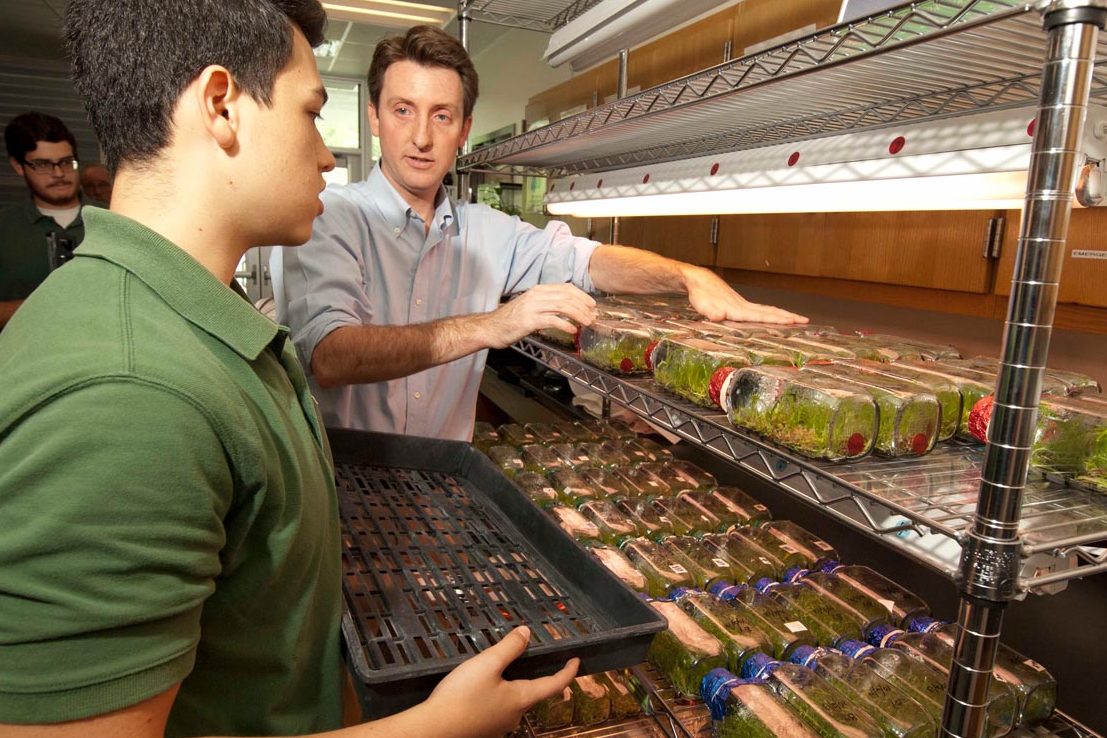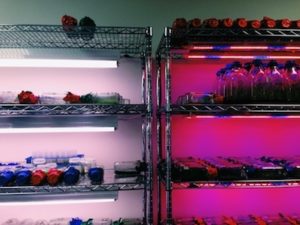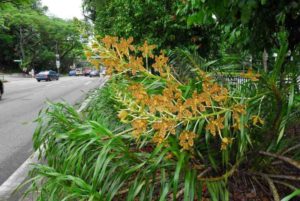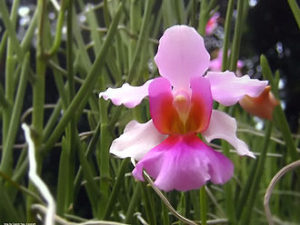
Orchids endangered by deforestation – giving them a new life
In some areas of the world orchids reappear in or near their original natural habitat after having been severely eradicated by “civilization” a hundred years earlier. While this process can occur naturally over time, it is exciting to learn about projects where nature is being given a lot of help. One such project is the Million Orchid Project being driven by the Fairchild Tropic Botanical Garden and the city of Coral Gables in south Florida. They are literally flasking over a million seedlings to be planted by volunteers all around south Florida, particularly in Dade County.
Before widespread deforestation, orchids grew in abundance
Until the late 1800’s in areas like Biscayne Bay, orchids grew on every tree and limb, particularly on oaks, mahoganies, pines and buttonwoods. But when the Florida East Coast Railroad opened up this area, virtually every orchid was removed and shipped north for the floral trade. Whatever the scavengers didn’t get was eventually destroyed by urbanization and agriculture.
Fortunately, with the help of volunteers and student in local schools, this huge experiment is now underway to help a few species, once common in the area, to make a comeback in what is now an urban environment. Oaks and mahoganies are also returning, which is fortunate, because these trees are needed to provide a habitat for he orchids.
On Earth Day 2014 the first round of orchid seedlings were planted on trees in downtown Carol Gables They are expected to be flowering within 2-3 years. The question now is, will they thrive and propagate? If they do, we will know the project was a success. For now, we have to be happy with the fact that someone is making the effort to restore the beauty of orchids in the area.
The seedlings are being raised in the new Micropropagation Laboratory at Fairchild. One fruit pod may produce 10,000 to 15,000 microscopic seeds that are initially distributed into 10 flasks. After sprouting, they are re-flasked into 50 and eventually into 250 bottles. The entire process takes about 18 months. The seedlings will then spend 6-9 months in the greenhouse on what looks like burlap bag lined trays before being introduced to the “wild”. (See how flasking is done here. You can also see a video of the flasking process.)
 By replicating this process for 16 fruit pods a year over 5 years, one million seedlings will be grown. This is a very labor-intensive job, and would be very expensive, were it not for an army of dedicated Fairchild volunteers who care enough about orchids to devote the time to bring the project to fruition.
By replicating this process for 16 fruit pods a year over 5 years, one million seedlings will be grown. This is a very labor-intensive job, and would be very expensive, were it not for an army of dedicated Fairchild volunteers who care enough about orchids to devote the time to bring the project to fruition.
And what about the enormous amount of space such a project requires? Fortunately, this turned out to also not be a problem. As part of their educational programs, about 30 high schools in south Florida will house and monitor the growing conditions of the orchids, and will eventually plant seedlings in their surrounding areas.
Finally, to help cover some expenses, the AOS Research and Conservation Committee is supporting the research involving LED lights used to propagate the seedlings. Those who attended the last SWROGA members meeting in Oklahoma City will recall Ron McHatton mentioning briefly AOS’s involvement in the project.
 Organizations around the world are working hard to save orchids
Organizations around the world are working hard to save orchids
The inspiration and model for this urban reintroduction was the successful project by the Singapore Botanical Gardens to conserve native species along their local roadsides, as well as in parks and nature reserves. To begin their project, Singapore introduced the Grammatophyllum speciosum in 1999, and had their first blooms in February 2013. Other species successfully propagated and reintroduced were the Bulbophyllum vaginatum and the Bulbophyllum membraceum.
 None of this work was going on when I worked at Texas Instruments Singapore in 1979. All I remember seeing were the Vandas in Botanical Gardens and the famous Vanda ‘Miss Joaquim’. According to my much used Singapore Guide which I just can’t seem to part with, Vanda Miss Joaquim is a natural hybrid that first appeared in Singapore in 1893 and is the national flower of Singapore. Vanda ‘Miss Joaquim’ is a cross between the Burmese Vanda teres (now called Papilionanthe teres) and the Malayan Vanda hookeriana (now called Papilionanthe hookeriana). What a wonderful thought it is to imagine orchid species growing in my old neighborhood.
None of this work was going on when I worked at Texas Instruments Singapore in 1979. All I remember seeing were the Vandas in Botanical Gardens and the famous Vanda ‘Miss Joaquim’. According to my much used Singapore Guide which I just can’t seem to part with, Vanda Miss Joaquim is a natural hybrid that first appeared in Singapore in 1893 and is the national flower of Singapore. Vanda ‘Miss Joaquim’ is a cross between the Burmese Vanda teres (now called Papilionanthe teres) and the Malayan Vanda hookeriana (now called Papilionanthe hookeriana). What a wonderful thought it is to imagine orchid species growing in my old neighborhood.
Even though Singapore is situated only 95 miles north of the equator, and has a climate much more tropical than that of Florida, the Fairchild Project planners nevertheless decided that Singapore’s example could be duplicated and made successful in Florida. Some of the first orchids to be part of the project are the Florida butterfly orchid (Encyclia tampensis) and cowhorn orchid (Cyrtopodium punctatum), which happen to be found naturally in the Fairchild gardens.
Orchid societies around the country and around the world are involved
We can all be proud that our subscriptions and donations to AOS helps the AOS fund efforts such as the Million Orchid Project in Florida. I am personally gratified that I am able to use my art to help promote conservation and reintroduction of orchids throughout the world. Every little bit helps.
An old Chinese proverb tells us,
It is better to light a single candle, than to curse the darkness.
The projects in Singapore and Florida are fine examples of just how true and wise that proverb is.![]()